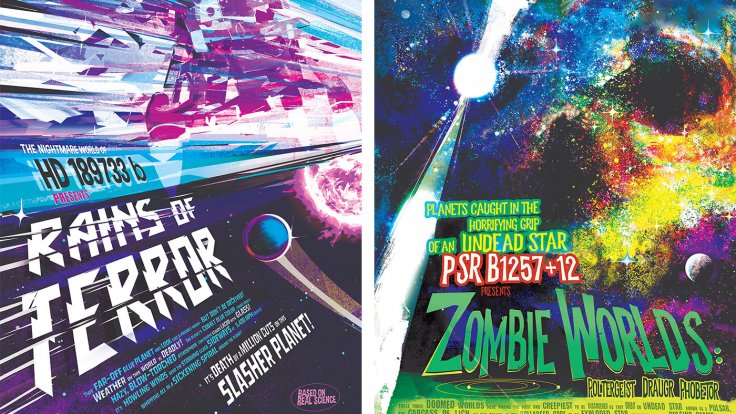
NASA launched a new horror-themed informative series just in time for the Halloween season. The series, dubbed as Galaxy of Horrors, focuses on the terrifying exoplanets that are situated in uninhabitable parts of the galaxy.
For the new series, NASA released numerous posters depicting different exoplanets. Keeping in line with the series' Halloween theme, the designs of the posters were patterned after the general look of the classic horror movies from the 1950s. NASA noted that these new posters can be downloaded for free through the Galaxy of Horrors page.
Thalia Rivera, who headed the development of the new posters for NASA, explained that the purpose of Galaxy of Horrors is to educate people about exoplanets. More importantly, the series shows just how extreme certain exoplanets can be.
"People are often most interested in finding exoplanets that could resemble Earth or potentially support life as we know it," Rivera said in a statement. "But there are so many other amazing, mystifying planets out there that are completely unlike Earth and that show us the huge variety of ways planets can form and evolve. My favorite thing about exoplanets is how extreme they can get!"
Aside from the posters, NASA also created a video to promote the Galaxy of Horrors. Although the video was intentionally made to look like a trailer for a vintage horror movie, it still contains valuable information regarding some of the most dangerous exoplanets ever discovered.
One of the exoplanets introduced in the video has been named the Rains of Terror due to its extreme weather conditions. According to NASA, the exoplanet's bluish appearance is caused by its hazy atmosphere. Winds generated by the atmosphere can reach up to 8,700 kilometres per hour, sending shards of natural glass formations flying sideways.
Another terrifying exoplanet discussed in the Galaxy of Horrors video is the Poltergeist Planet. As explained by the agency, this exoplanet is one of the dead planets that orbit a host star that has already died. Despite the star's status, it is still able to rain down high levels of radiation.
"One of three dead planets shambling through the twisted magnetic fields of their corpse star, Lich, which is itself the collapsed core of an exploded star," the video's narrator stated. "But despite its demise, this undead star spins twin beams of radiation that could incinerate a spaceship foolish enough to venture too close."
"Even if you could make it to the surface, your nightmares would continue as the radiation from the zombie star rains down on planet Poltergeist, as well as her neighboring dead worlds of Draugr and Phobetor," the narrator continued.









